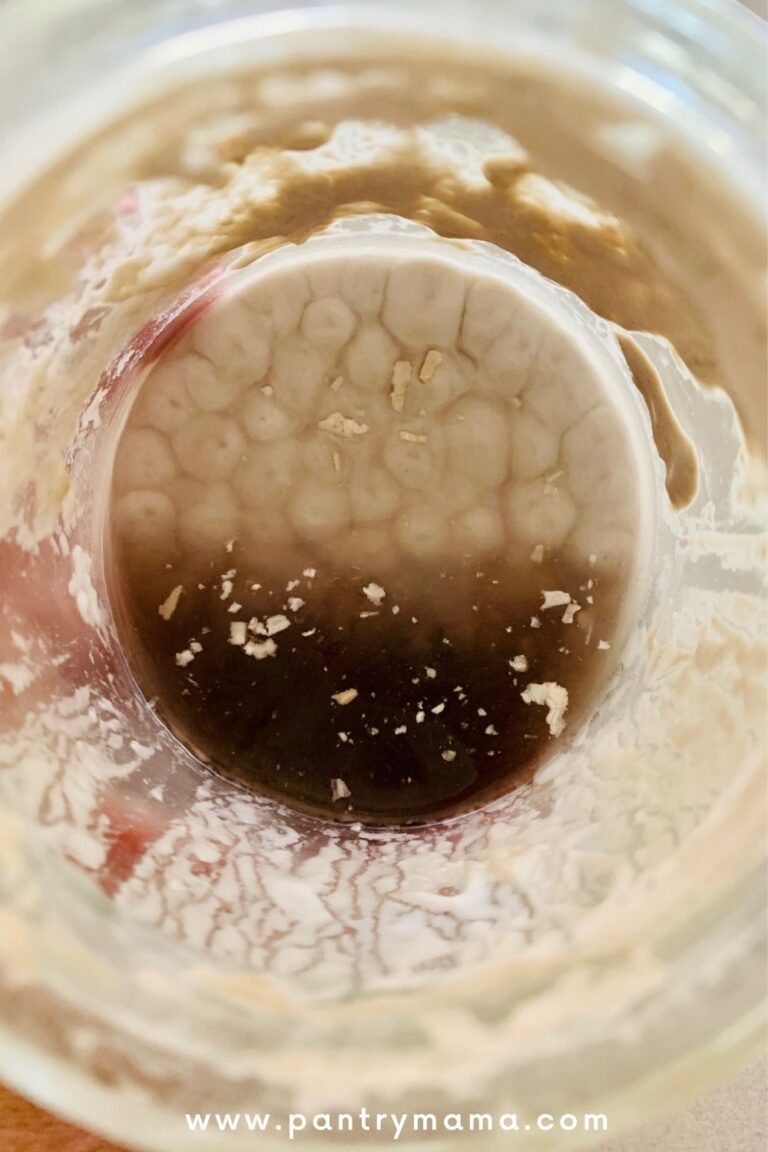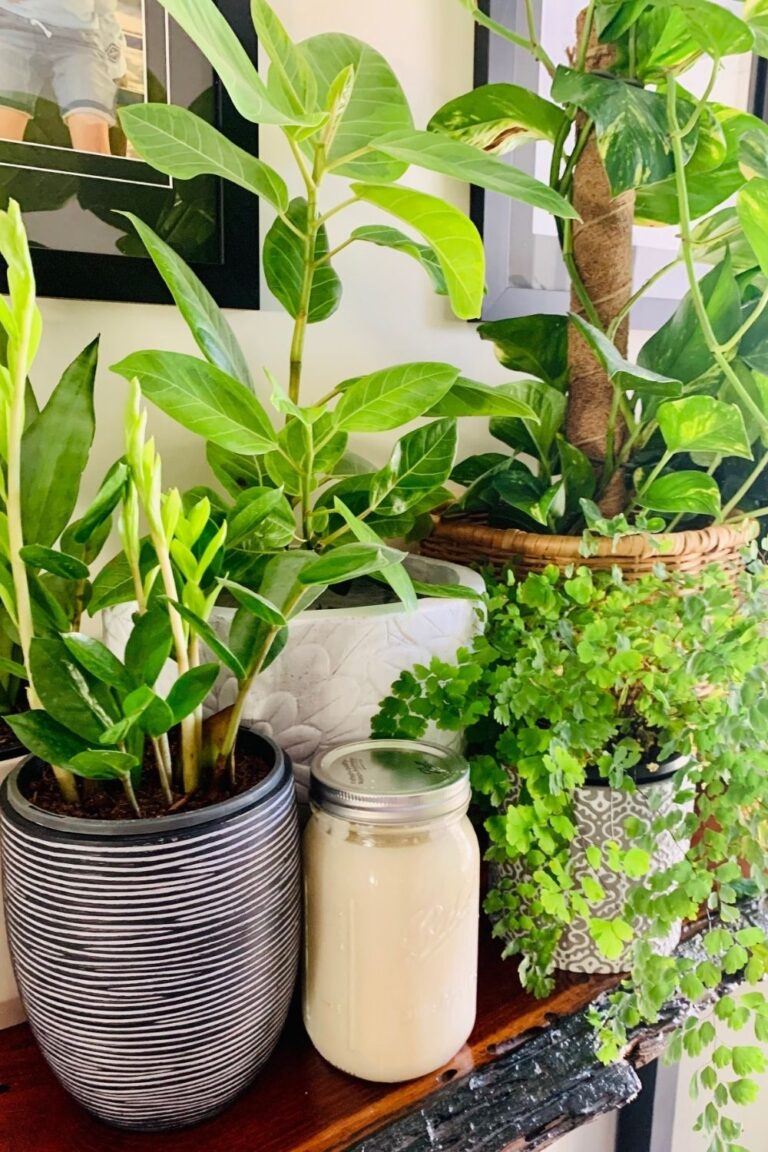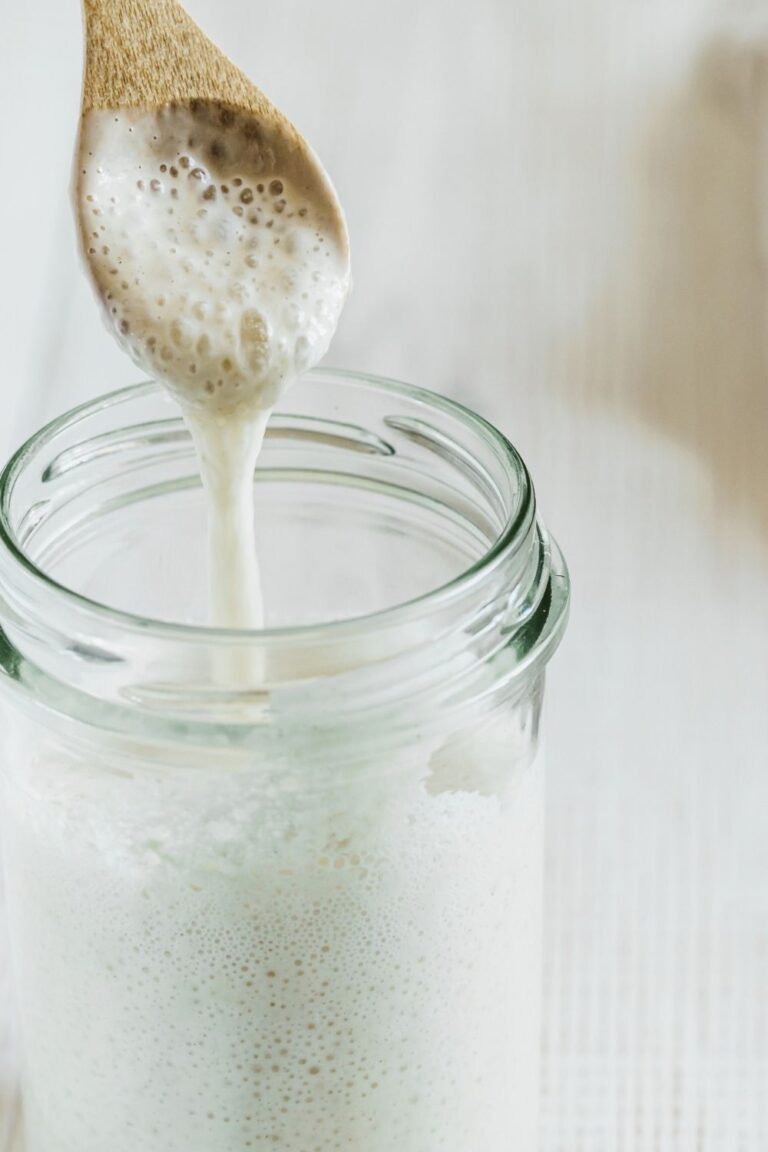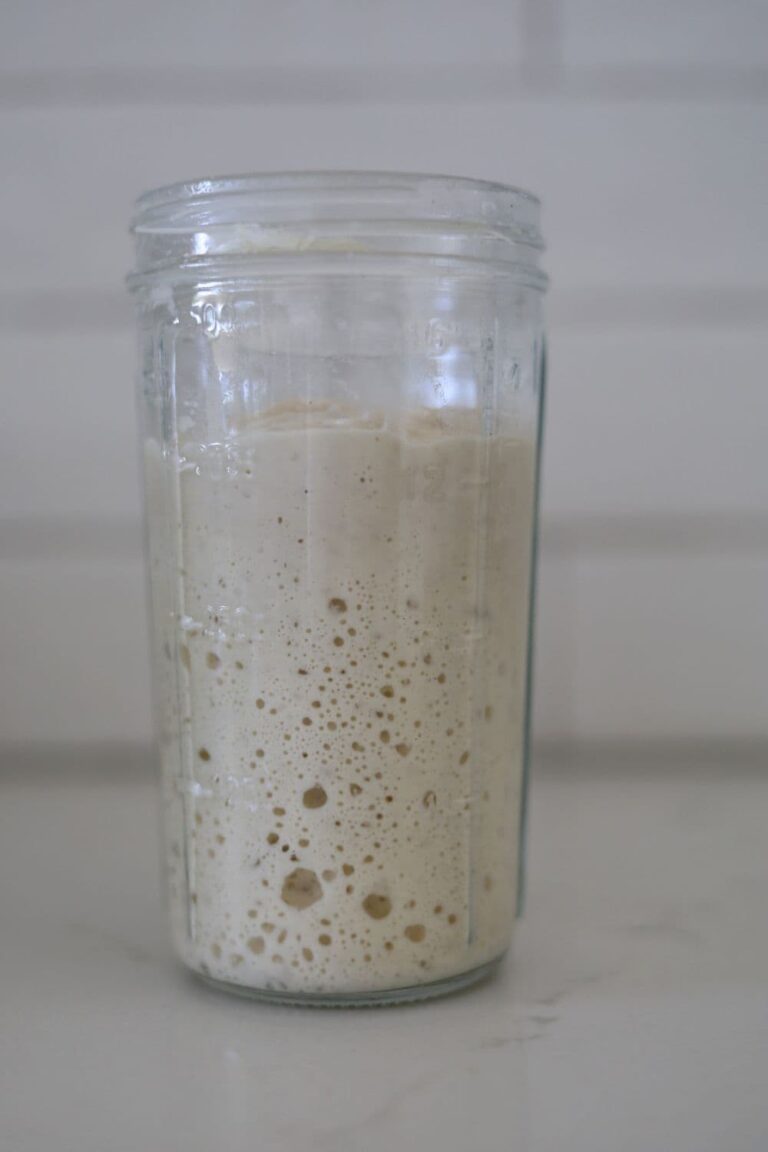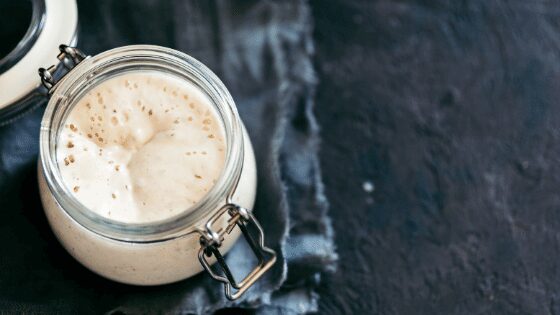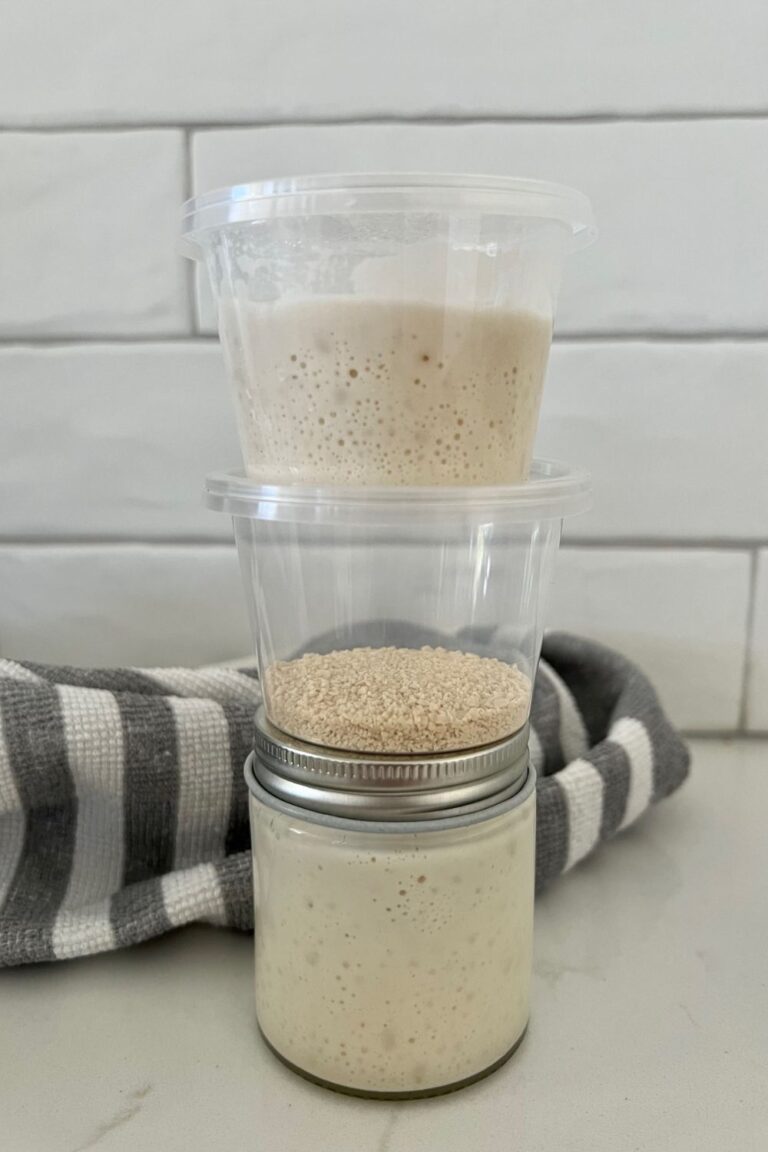How Do You Know When Your Sourdough Starter Is Ready To Bake With?
This post may contain affiliate links.
One of the questions I get asked the most is "what does sourdough starter look like when it's ready" and " how do you know when your sourdough starter is ready?"
Knowing when your sourdough starter is ready to bake with is a very important part of your sourdough journey.
There's no point baking with a sourdough starter if it's not going to raise your bread, right?
This blog will take you through the readiness signs to look for, as well as how to know when your sourdough starter has reached maturity.
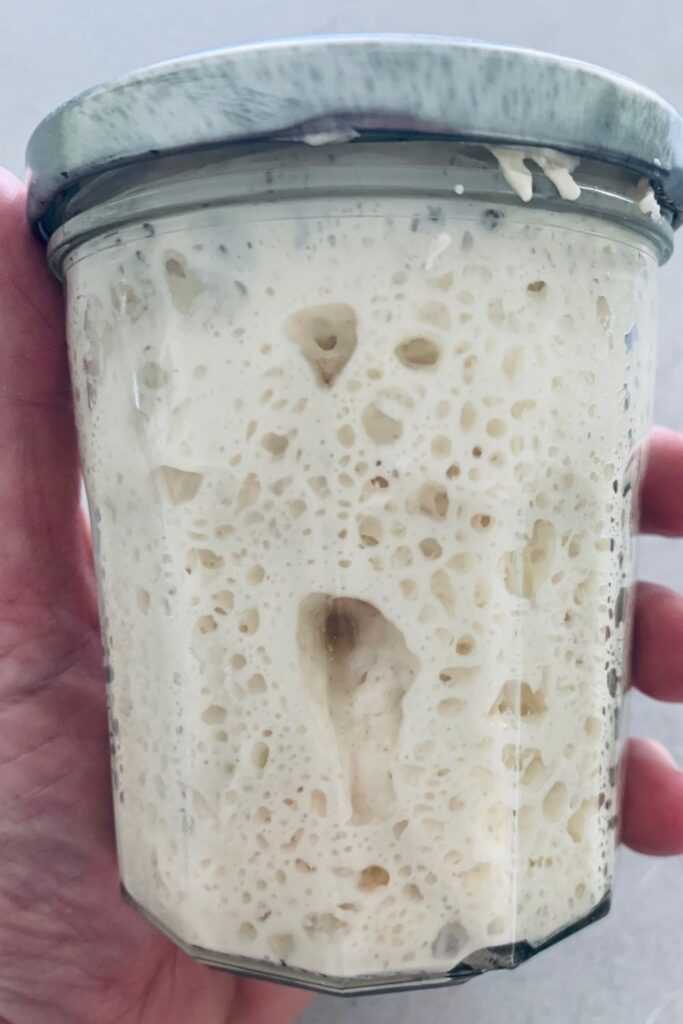
When Is Your Sourdough Starter Ready To Bake With?
Your sourdough starter will not be ready for at least 14 days from when you started it.
You can try to bake with it before 14 days, but honestly, you'll be rewarded with better bread if you wait.
Most people that bake with their starter before day 14 find their bread doesn't rise and the crumb is gummy and tight.
If you're really impatient, you could try this easy sourdough discard bread.
Once your starter is 14 days old, you can look out for some of the signs of readiness.
Your starter may show these signs from 14 days, but it might take 4 or even 6 weeks before your sourdough starter is really ready to bake with.
Your sourdough starter is ready when it displays the following signs:
- Doubling (at its peak) consistently within 4-6 hours of feeding (this is the most important sign your starter is ready);
- Smells yeasty and quite lovely - if it smells like acetone, parmesan cheese, stinky socks or anything unpleasant, keep feeding it!
- It has bubbles that break on the top when it peaks;
- It has a domed shape to the surface when it peaks;
- There is a sponge like look to the starter when you view the side of the jar. The bubbles will be quite large and the jar will feel light when the starter peaks;
- There will be a honeycomb like network of bubbles visible when you tip the jar on its side.
- It should be thick - like the consistency of warm peanut butter or thick pancake batter. When it doubles it will have an aerated, mousse like consistency. It will be stretchy and elastic - but still pourable. It should not be runny or watery.
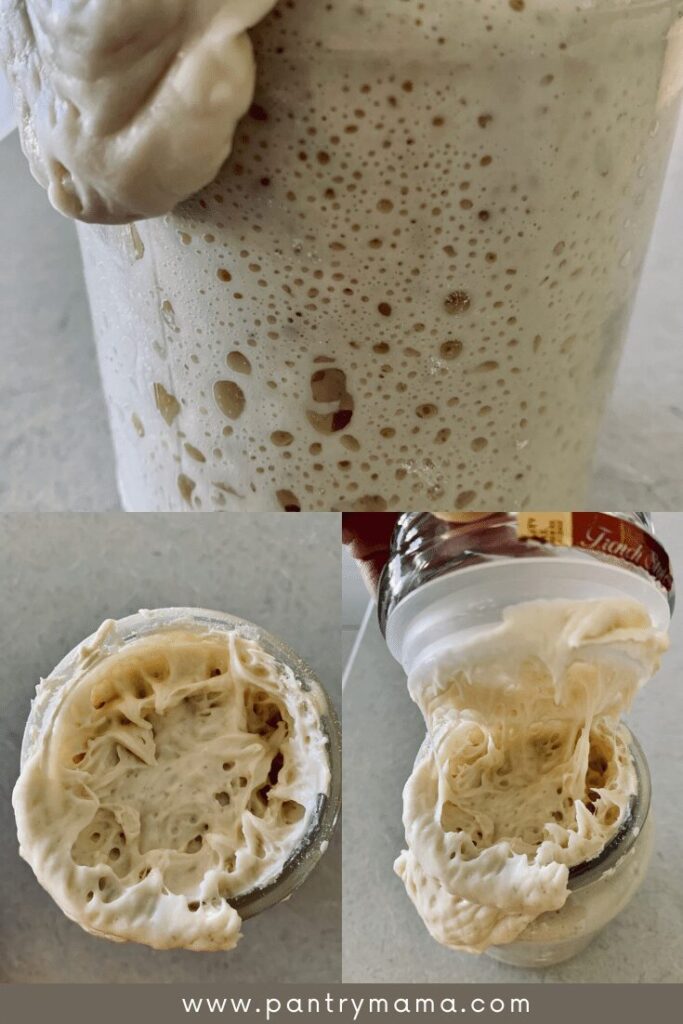
It's an absolute myth that you can build a sourdough starter in 5 or even 7 days. While your starter may start to double in this time, the good bacteria will still be trying to establish itself as the dominant force.
It's really not recommend to use your starter during this time.
In fact, you can't even use the discard. It needs to be tossed completely until at least day 7.
Does My Starter Need To Double?
The most important sign of sourdough starter readiness is that your starter is doubling every single time you feed it.
A sourdough starter needs to at least double its volume, but could even triple if it's really active and happy.
Ideally, it should be doubling within 4 to 6 hours of feeding - but it can sometimes happen within just 2 hours if it's warm.
If your starter is not doubling, it's not ready and it will not have the ability to rise bread (and you'll end up with very under fermented sourdough bread).
If it's cold in your kitchen, your starter may take longer to double. Feeding it a higher ratio than 1:1:1 will also affect the time it takes to double.
If you've been feeding your starter consistently every day for more than 4 weeks and it's still not showing signs of readiness, try these tips to give your starter a boost.
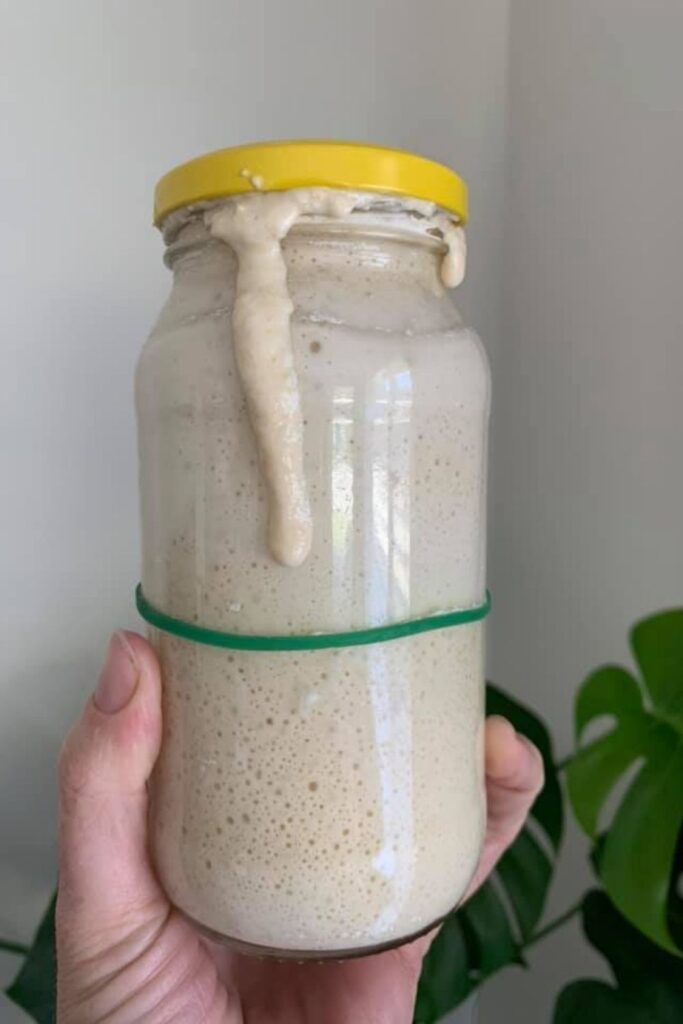
Sourdough Starter Float Test
There is a lot of controversy around the float test. Many people say it is inaccurate. Others swear by it.
It can be a good gage at where your starter is at.
However I will add one caveat. Your starter must be at its peak for the float test to work.
This is because when the starter is at its peak, it has the most gas present. If it's still rising or is deflating, it will not have enough gas and subsequently will not float. You can read more about the best time to use sourdough starter here.
How To Perform The Float Test:
Take a glass of water. Scoop a small spoon of your starter out of the jar - DO NOT STIR IT FIRST. Drop the starter into the glass of water. If it floats, it's ready to bake with. If it sinks, it's not ready.
Honestly, you don't really need to use the float test. It's much better to use the readiness signs listed further up. They are much more accurate.
Here's some more info if you are interested in learning more about the float test and why it can be inaccurate.
Maturity of A Sourdough Starter
While you can generally start baking with your sourdough starter from around 14 days (as long as it's doubling consistently after feeding) - your sourdough starter will not actually fully develop and mature for quite a while.
In fact, you will need to wait for at least 3 to 4 months for your starter to really come alive. Yes. Sourdough really does require immense patience!
Your sourdough starter is full of amazingly beneficial bacteria and yeast colonies that have developed from the environment in which you live.
They adapt, change and grow with temperature changes, physical environment changes and changes to the flour and water you feed them.
Your patience in letting them develop and flourish will be rewarded with amazing bread!
You will really notice a difference once your sourdough starter is mature. It will smell amazing, it will double within a few hours of feeding. You'll get the most amazing crumb in your loaves - it's definitely worth the wait and work!
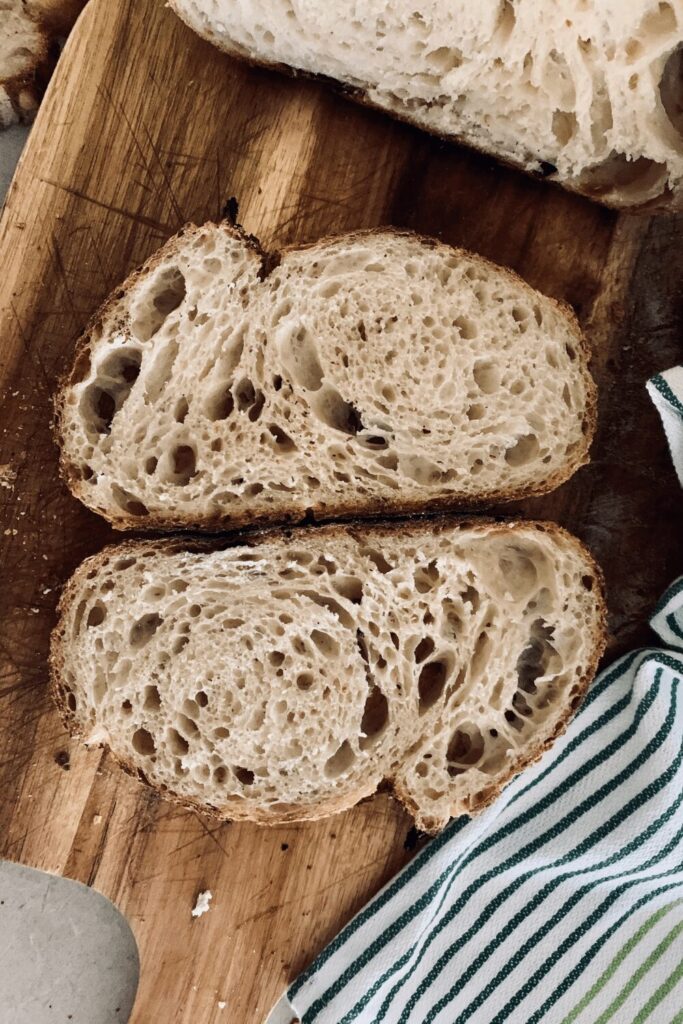
One of the best pieces of advice I can give you is - do not put your sourdough starter in the fridge until it matures.
When you put your starter in the fridge, it goes to sleep. This is great to stop you having to feed it all the time - however - if it's not mature, you're basically stunting it's growth.
It will take much, much longer for it to develop while being kept in the fridge and only fed once a week (or even less).
Plus you can't use sourdough starter right of the fridge - it must be fed first!
I never put mine in the fridge. I do have a jar in there as back up - just in case something happens.
But my faithful starter lives on my kitchen counter.
I feed it every single day. In fact I generally feed it twice a day because I bake through the day.
It is very resilient though, so if I miss a few days of feeding (like when my kids are sick or life just gets busy) it is totally fine at room temperature.
If I've neglected it for a few days I just discard and feed as normal and it's generally back to its happy self within a day.
You can read my full guide to maintaining and feeding your sourdough starter once it reaches maturity here.
Frequently Asked Questions
Ideally 4 to 6 hours as this is generally how long it takes for your starter to peak (double). However, you can manipulate the time your starter takes to peak by increasing or decreasing the ratio you feed it at. This means that you can better fit sourdough into your lifestyle.
It really doesn't matter whether you stir your sourdough starter before you use it. Because ingredients are measured in grams, your sourdough starter will weigh the same whether it's been stirred or not. This is another reason that you should avoid measuring sourdough ingredients via volume and always measure using weight.
It's an absolute myth that sourdough starter is ready to bake with in just 5 days. If you are rehydrating a previously dried, mature sourdough starter - sure! But if you are starting from scratch, you'll need much more than just 5 days. In fact most sourdough starters aren't even viable until at least 14 days. In the first week, a sourdough starter will go through many stages while the good bacteria and yeast establish themselves as the dominant colonies. During this time you should not use the discard - it needs to be tossed completely.
There are so many factors that go into this decision. I've put together a guide that will take you through the realities of making a sourdough starter vs buying one ready made - you can find it here.
Your starter only needs to double before you use it - it does not have to triple! Some people like to see their sourdough starter triple, but it's not essential - doubling is enough.
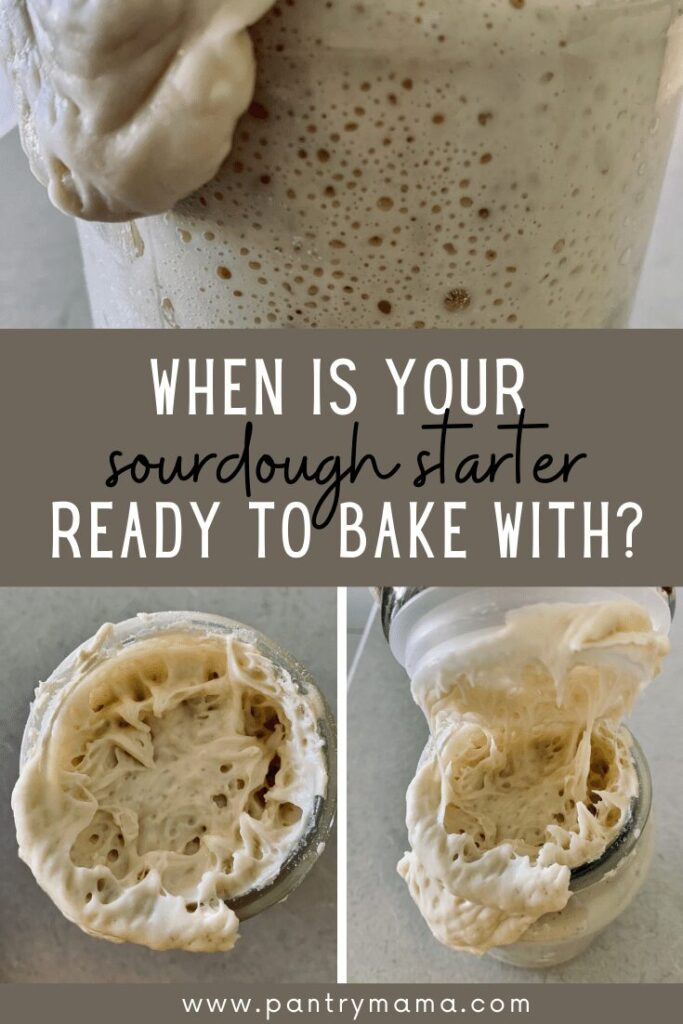
Further Reading:
If you found this article helpful, you might enjoy these:
- Best time to use sourdough starter
- If your starter isn't quite ready you could try making this easy sourdough discard sandwich loaf.
- Looking to troubleshoot your sourdough starter? You'll find the most common sourdough problems here, plus easy solutions to get your starter back on track.
- Where does the yeast in a sourdough starter come from?
- Need ideas for keeping the kitchen flour free while building your sourdough starter? These tips for cleaner sourdough will help you eliminate sourdough mess.


